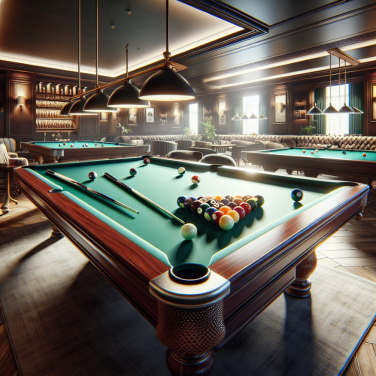In the thrilling world of indoor soccer, the pace of play is lightning-fast, and the action is non-stop. Unlike its outdoor counterpart, this variant of soccer is played within the confines of walls, and as such, demands a unique set of skills and strategies from its players, along with specialized equipment and facilities. Let's delve into the various facets that make indoor soccer an exciting sport to play, watch, and understand.
**Understanding the Basics: Rules and Gameplay**
Indoor soccer, though based on traditional soccer, has its own set of rules that make it distinct. The playing field is smaller and typically surrounded by walls or boards, which means that the ball rarely goes out of play, creating constant engagement for players and spectators alike. The number of players on the field is usually six per team including the goalkeeper. One key aspect is the unlimited substitution rule, allowing for a dynamic and fast-paced game where players can maintain a high intensity throughout the match.
**Key Skills and Tactics**
In indoor soccer, players must hone specific skills to excel. Close ball control and quick decision-making are crucial due to the smaller playing area and the quick tempo of the game. Tactical awareness is also different in indoor; the enclosed space reduces the effectiveness of long passes and promotes short, swift passing to maneuver through the opposition's defense. Positional play is fluid, with players frequently rotating and assuming multiple roles during the game, which makes versatility a valuable trait.
**Equipment and Gear**
The gear in indoor soccer is tailored for the surface and pace of the game. Indoor soccer shoes, or flats, have a flat, gum-rubber sole for better grip on the playing surface, which can be synthetic turf or a hard floor. Shin guards remain a necessity, though they can be lighter and less bulky. The ball is often smaller and heavier than an outdoor ball to suit the indoor environment and minimize its bounce.
**The Playing Field: Features and Dimensions**
An indoor soccer field is characterized by its compact size, often measuring around 200 feet in length and 85 feet in width. The goals are smaller compared to outdoor soccer, and the playing surface is flat and devoid of grass. Nets or walls keep the ball in play, adding a unique dimension to the game as players can use them to pass or ricochet shots on goal.
**Training and Conditioning**
Training for indoor soccer focuses on improving speed, agility, and stamina given the fast pace of the game.
Read also:
Understanding the Importance of a Golf Pressure Plate: An In-depth Analysis Through Video
Exploring the Fast-Paced Gameplay of Indoor Soccer
Indoor soccer, an exhilarating variant of traditional outdoor soccer, is known for its fast-paced gameplay and requires a unique blend of speed, skill, and strategy. One of the most fundamental differences between indoor soccer and its outdoor counterpart is the size of the playing field. Smaller playing areas accelerate the pace of the game, necessitating quick reflexes and constant movements.
The playing surface is another critical factor that contributes to the rapid tempo of indoor soccer. Typically consisting of synthetic turf or a hard court, it allows the ball to move faster and more predictably than on grass. Players must adapt by sharpening their ball control and passing accuracy, as misplaced touches and passes can easily lead to turnovers and counter-attacks.
With walls or boards surrounding the field, the ball remains in play more frequently than in outdoor soccer, where it can go out for throw-ins or goal kicks. This continuous play means fewer stoppages and a consistently high tempo. Players must stay attentive and ready to react at all times, as the ball can rebound off the walls and change direction quickly, leading to sudden goal-scoring opportunities.
The fast pace of indoor soccer also changes the players' physical demands. Intense, short bursts of running are more critical than the endurance required for outdoor soccer. Consequently, players often engage in high-intensity interval training off the pitch to improve their speed and cardio-respiratory fitness, equipping them for the relentless action of indoor matches.
Tactically, teams must be clever and adaptive. The close quarters of the game require lightning-fast decision-making, often demanding one-touch passing and an emphasis on movement off the ball to create space. Positioning is essential, as is communication amongst teammates to manage the tight spaces and rapidly shifting dynamics of the game.
Defensively, there is little margin for error. A team that loses possession must transition to defense immediately to avoid being caught out by a quick counter-attack. Goalkeepers, too, face an intense challenge, reacting to shots that come from shorter distances and at potentially higher speeds. Their ability to anticipate and react is crucial in preventing goals and sparking counter-plays.
Overall, the fast-paced gameplay of indoor soccer provides an exciting and intense sporting experience, both for players and spectators. It's a sport that combines the endurance and agility of traditional soccer with the speed and dynamism of more intense, enclosed environments, creating a thrilling spectacle full of goals, saves, and non-stop action.
Mastering the Strategy and Techniques in Indoor Soccer
Mastering the strategy and techniques in indoor soccer is crucial for success in this fast-paced and exhilarating sport. Unlike outdoor soccer, indoor soccer is played within a smaller field that's usually surrounded by walls or boards. This unique playing environment means that the tactics and skills required differ somewhat from those needed in the outdoor game.
Firstly, adopting the right strategy is fundamental. Teams often use a formation like 2-2 or 3-1, with players assigned specific roles—defenders, midfielders, and attackers, though with more fluidity because of the quick transitions of the game. One common strategy is the rotation system where all players rotate positions to maintain defensive organization and create offensive opportunities.
Another important aspect of strategy is to understand the importance of possession. Given the smaller playing surface and fewer players, maintaining possession can control the pace of the game and help to create scoring opportunities. Players must be comfortable with the ball at their feet and be able to execute short, quick passes accurately.
Defensive techniques are also different in indoor soccer. Players must learn to use the boards to their advantage, either when blocking shots or passing to teammates. It is also essential to apply immediate pressure after losing possession to prevent the opposing team from having time and space to attack.
Offensively, mastering the wall pass—where a player uses the wall to pass around an opponent—is a key technique. This tactic can create space and disorient defenders who are not used to accounting for the wall as an "extra player." Shots on goal may also be taken more frequently in indoor soccer due to the proximity of the walls and goals.
With quicker surface and no out-of-bounds, indoor soccer demands that players develop strong dribbling skills and a quick first touch. The ability to control the ball quickly and confidently can make a significant difference, as players often find themselves in tight spaces with limited time to make decisions.
Goalkeeping in indoor soccer is another area that requires specific skills. Goalkeepers must be adept at reading the game, as the action is continuous and shots can come from any angle. Reflexes need to be sharp, and keepers must be comfortable playing with their feet, as they often serve as an additional field player.
Fitness levels and agility must not be overlooked. The non-stop nature of indoor soccer means that players must be in excellent physical condition to maintain high levels of performance throughout the game.




